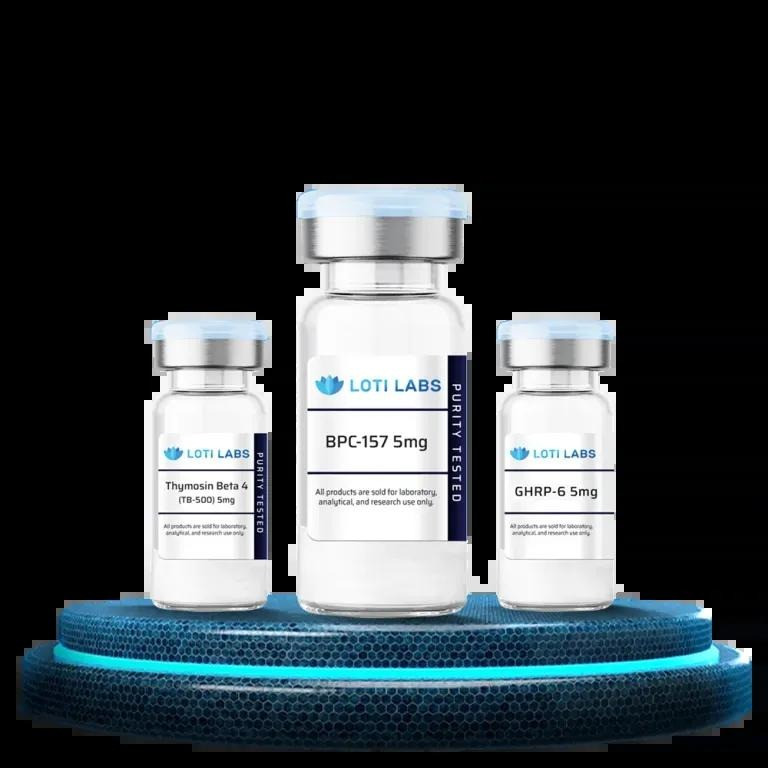Peptide Science: Mechanisms and Research Applications
Peptides are short chains of amino acids that serve as crucial signaling or structural molecules. Investigating these compounds offers valuable insights into how the sequence, structure, and chemical properties of peptides influence various biochemical pathways. Current research primarily concentrates on their formation, interactions with receptors, modulation by enzymes, and structural roles, leading to applications in therapeutic design, metabolic research, tissue repair, and studies on antioxidants.
Structure and Formation of Peptides
Peptides consist of amino acids linked together by peptide bonds. The formation of a peptide bond occurs during a condensation reaction between the amino group of one amino acid and the carboxyl group of another, resulting in a covalent backbone that features a free N-terminus and C-terminus. The primary sequence encodes information that determines molecular recognition, stability, and interaction surfaces. Short peptides, including dipeptides and tripeptides, demonstrate high solubility and quick turnover, while longer oligomers begin to adopt secondary structures like alpha helices or beta sheets. The length of the chain and the specific sequence have direct implications for chemical stability, susceptibility to enzymatic degradation, and affinity for receptors.
The distinction between peptides and proteins is primarily based on size. Peptides typically contain fewer than 50 amino acid residues and often function as signaling molecules, whereas proteins are longer, folding into stable three-dimensional structures that carry out various structural, catalytic, or transport functions. There is a spectrum that exists between long peptides and small proteins, with overlapping functionalities. For instance, insulin is categorized as a peptide hormone, while collagen is recognized as a structural protein composed of repeating polypeptide chains.
Mechanisms of Peptide Action
Peptides exert their effects through several recurring mechanisms. They can bind to specific receptors, initiating intracellular signaling cascades, modulate enzymes via competitive or allosteric interactions, or disrupt membranes in the case of antimicrobial sequences. The binding of peptides to receptors relies on complementary surfaces formed by side chains, with the sequence determining both affinity and specificity. The activation of receptors often involves G-proteins or kinase pathways, which lead to second-messenger responses such as cAMP or calcium flux, subsequently altering gene expression, enzymatic activity, or cellular metabolism. The duration and intensity of signals are influenced by the stability of the peptide and the kinetics of receptor interactions.
In addition, peptides play roles in paracrine and endocrine signaling, enzyme inhibition, and membrane interactions. Competitive binding can occupy catalytic sites, while allosteric interactions can modify the conformation and activity of enzymes. Antimicrobial peptides function by interacting with lipid membranes, altering their permeability and compromising the integrity of microbial cells. These varied mechanisms render peptides versatile tools for biochemical modulation and experimental exploration.
Classification and Functional Categories
Peptides are typically classified based on their length and biological functions. Dipeptides consist of two residues and often act as metabolic intermediates or signaling fragments. Oligopeptides, which generally range from 3 to 20 residues, frequently function as hormones or rapid-response signaling molecules. Polypeptides, exceeding 20 to 50 residues, can adopt protein-like domains, enabling them to fulfill structural or enzymatic roles. This classification aids in experimental design, as shorter peptides diffuse more rapidly but are also more vulnerable to proteolysis, while longer polypeptides may necessitate assistance in folding or stabilization strategies.
Prominent classes of peptides that are the focus of research include:
Collagen peptides, which play a role in the synthesis of extracellular matrix and connective tissue proteins.
BPC-157, investigated for its effects on angiogenic signaling, inflammation modulation, and structural repair pathways.
GLP-1 receptor analogs, which influence metabolic pathways through receptor-mediated signaling.
Antimicrobial peptides, which target microbial membranes and modulate innate immune responses.
Thymosin-like peptides, which are studied for their roles in immune cell regulation and cytokine modulation.
Each class of peptides varies in terms of mechanisms and the evidence supporting their functions, with some being primarily validated through preclinical models and others having been studied in controlled laboratory settings.
Peptide Mechanisms in Structural and Metabolic Studies
Research has identified several mechanistic pathways through which peptides operate within tissue and metabolic systems. Peptides derived from collagen offer substrates for components of the extracellular matrix and may stimulate fibroblast activity and protein synthesis pathways. Peptides involved in structural repair influence local growth factor signaling and angiogenesis, thereby affecting tissue remodeling processes. Peptides that act on metabolic receptors, such as GLP-1 analogs, engage transmembrane receptor pathways and downstream second messengers, modulating networks related to glucose, lipids, and cellular signaling. Antimicrobial sequences impact membrane integrity and microbial viability through amphipathic interactions. Thymosin-like peptides are known to regulate immune signaling cascades, including the maturation of T-cells and cytokine responses.
A comprehensive understanding of these mechanisms is crucial for experimental design, including the selection of sequences, chemical modifications to enhance stability, and strategies for ensuring bioavailability. Factors such as peptide length, folding propensity, and post-synthetic modifications significantly influence receptor interactions, half-life, and functional outcomes.
Delivery, Stability, and Formulation Considerations
Peptides encounter various challenges regarding their chemical stability and cellular delivery. Short sequences are particularly susceptible to proteolytic degradation, while longer polypeptides often require proper folding or chemical modifications to maintain their activity. Formulation strategies may involve chemical stabilization, acetylation, cyclization, or encapsulation within lipid-based systems. Factors such as molecular size, polarity, and structural conformation significantly affect bioavailability and systemic distribution. Experimental studies frequently assess modified peptide forms to enhance resistance to enzymatic degradation and improve interactions with target receptors or signaling pathways.
Evidence Levels and Experimental Context
The level of supporting evidence varies among different classes of peptides. Collagen peptides and GLP-1 analogs have been thoroughly characterized in controlled laboratory environments. In contrast, BPC-157 and thymosin-like peptides remain largely within the realm of preclinical or early-stage research. Antimicrobial peptides have backing from mechanistic studies and targeted experimental programs. Mapping the levels of evidence is essential for selecting peptides for research purposes and accurately interpreting the observed molecular effects.
Summary
Peptides serve as fundamental biochemical modulators, acting through mechanisms such as receptor binding, enzyme modulation, and structural interactions. Classifying peptides by their length and biological roles clarifies both their mechanisms of action and experimental design. Key research-oriented peptides include collagen fragments, BPC-157, GLP-1 analogs, antimicrobial sequences, and thymosin-like peptides, each exhibiting distinct pathways and varying levels of evidence. A thorough understanding of peptide formation, receptor interactions, chemical stability, and formulation strategies is vital for conducting experimental investigations. Careful verification of sequence, purity, and structural characteristics is necessary to ensure reproducible and scientifically valid results. Learn more about the science of peptides and explore Loti Labs Peptides and Loti Labs peptide capsules for deeper insights.




